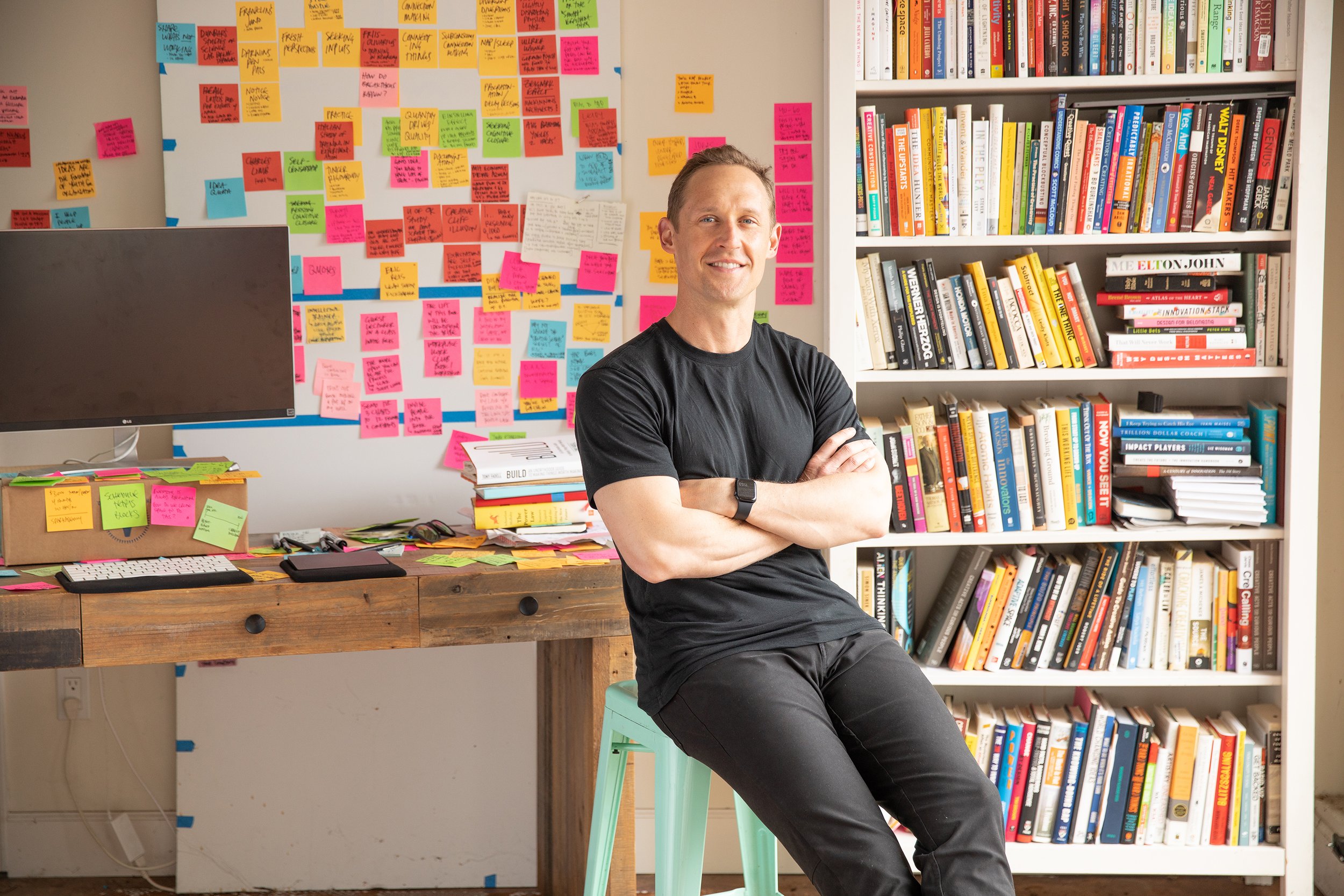
Paint + Pipette
A blog on the art & science of creative action.
Seek Surprises
Imagination is sparked by unexpected information. If you want to stimulate fresh thinking, seek out surprises. Here’s the inside scoop on the origins of an innovation at Mattel, which highlights the importance of welcoming an unexpected direction.
Monitor Creative Wellness
Self-care is all the rage, and rightly so. We cannot do our best work without attention to the instrument of self. But for all our emphasis, we’ve missed a vital component of wellness.
Find Your Fruit Water
“Fish don’t know they’re wet.” IDEO founder David Kelly says it’s critical to question the things we take for granted. Entrepreneur Gabriela Gonzalez Bux recounts a remarkable example in today’s guest post.
Court Serendipity
Steve Jobs said, “Theres a temptation in our networked age to think that ideas can be developed by email and iChat. That's crazy. Creativity comes from spontaneous meetings, from random discussions.”
Collect and Connect
One of my all-time favorite origin stories is a case study in innovation: a collision between boredom, R&D, ineffective technology and a frustrated choirboy.
Kindle What You Love
Jeff Bezos and Steve Jobs — and what propelled their project forward — have made me wonder whether the sterile calculus of today’s valuation-obsessed start-up culture has its priorities out of whack.
Protect the Braintrust
Ed Catmull describes the rigorous process by which Pixar’s movies go from terrible, to exceptional. Drawing on insights from Isaac Asimov, here are a few rules to follow.
Navigate Embarrassment
Taylor Swift and Isaac Asimov feel the same way about doing creative work: It can be embarrassing! How an innovator navigates those waters can make all the difference. Ben Franklin’s tactics provide clues…
Seek Folks Outside Your Orbit
The most exceptional innovators are just as diligent about their inputs as they are their outputs. Academy Award-winning producer Brian Grazer has kept up a rigorous input practice for thirty five years.
Answer the Right Question First
Many individual innovators, and the vast majority of organizations, expend far too many resources answering the illusive question, “Can it even be done?” Instead, they should invest a fraction of the effort to answer a simpler, more important question first.
Short-Circuit Self-Censorship
Thomas Edison is one of history’s most prolific inventors. He made regular professional use of an under-rated if not derided personal past-time. New research suggests his radical strategy works!
Take A Wonder Wander
Here’s one of the most popular tools we teach at Stanford. A simple, structured way to “think outside the box” and court the muse when you feel stuck on a problem.
Have Lots of Bad Ideas
Taylor Swift illuminates one of the most counterintuitive findings in all the creativity literature: the best way to have a good idea is to allow yourself to have lots of bad ideas. Seth Godin agrees.
Be Sparkable
One of the greatest compliments you can pay a collaborator at the d.school is to say they’re “sparkable.” What exactly does that mean? They’ve learned to have a particular effect on creative combustion.
Practice Inspiration
What’s routine to accomplished “creatives” like Steve Jobs and Lecrae isn’t even on the radar for many innovators-in-training. Learning to get inspired is one of the fundamental instincts we have to develop.
Resist Isolation
In the newly-normed hybrid work world, it’s easy to isolate ourselves in the name of “focus” and “flow.” Careful we don’t insulate ourselves against valuable inputs…
Unbox Thyself
The need to “think outside the box” seems obvious. A few Nobel Prize winners share their thoughts on how to do it. (It’s not nearly as complicated as you might think.)
Recognize When You’re Stuck
Most breakthroughs sneak up on us, and can easily recede from our memories. Seeing when we’re stuck is an important step in rewiring some of our default ways of working.
Set Boundaries
John Cleese argues convincingly that, while we can’t guarantee that creativity will yield to our invitations, yet blocking time and space for it to emerge is essential.



















